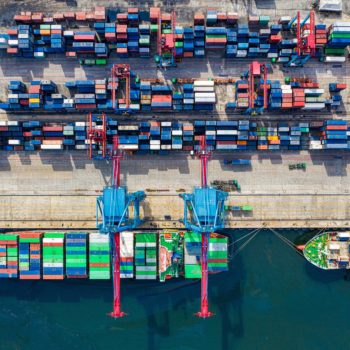 The COVID-19 pandemic has been the root cause of the supply chain crunch around the globe. The different COVID-19 variants have led to prolonged manufacturing shutdowns which has put stress on supply chains and businesses.
The COVID-19 pandemic has been the root cause of the supply chain crunch around the globe. The different COVID-19 variants have led to prolonged manufacturing shutdowns which has put stress on supply chains and businesses.
Manufacturers reeling from shortages of key components and higher raw material and energy costs are being forced into bidding wars to get space on vessels, pushing freight rates to record highs and prompting some exporters to raise prices or simply cancel shipments altogether. (Bloomberg)
Short on Materials, Longer Production Times
Almost all industries have seen longer production times due to a number of factors, such as: a reduction in raw material production, part/component availability, reduction in labor, and shipping. In some industries, supply chain issues could last as long as six months or more. These ongoing issues have challenged manufacturers to evaluate their product lines and potentially shift production to certain products that have lower production times with higher sales turnover. Reduction in production may lead manufacturers to focus on certain product lines and potentially discontinue production of particular products that require more labor or raw materials to produce.
It is hard to see supply chain bottlenecks being resolved any time soon, with some major exporters including Indonesia and Vietnam still struggling to contain the delta outbreak. It could continue to drag on the global recovery by slowing production and pushing up costs, although not derailing it. -Chang Shu, chief Asia economist for Bloomberg Economics
Impact on Small Businesses
With this supply chain crunch happening on a global scale, businesses of all sizes are affected in one way or another. Many companies are using this time to re-shore their manufacturing operations by moving operations back to, or near, their home country.
Re-shoring allows you to decrease transportation costs and retain more control over sourcing and manufacturing, which are extremely beneficial during uncertain times. Frequently, the one downside to this is an increase in operation expenses. However, with costs rapidly rising in China and additional countries in Asia, the cost effectiveness of international manufacturing is quickly eroding. Flexible sourcing strategies and adaptable operation plans are going to be the key to success for businesses during these challenging supply issue times.
Entrepreneurs just getting their business up and going are learning quickly that the manufacturing phase of product development is its own “beast”. With the supply chain crunch, finding a manufacturing partner for your product comes with a new set of challenges to overcome. Forward thinking entrepreneurs are looking towards additive manufacturing, commonly referred to as 3D printing, to help get their business off the ground. This technology has the potential to shorten production lead times and reduce supply chain problems.
For obvious reasons, fixing the supply chain bottleneck is important for many reasons. Higher costs of containers, shipping, hauling, and storage lead to higher consumer prices and overall inflation. The Fed is banking on the transitory nature of the bottleneck, expecting prices to level off once the supply chain is cleared. (Forbes)
The best way to weather this supply chain crunch is with flexibility and an eye on the future.
This blog post is a part 1 of 2. We will dive further into re-shoring manufacturing in our next post.
_____
3D Innovations is a Product Development Company – from the 3D Design to a fully functional 3D Prototype & Product.
Subscribe to the 3D Innovations newsletter on our Facebook page!

